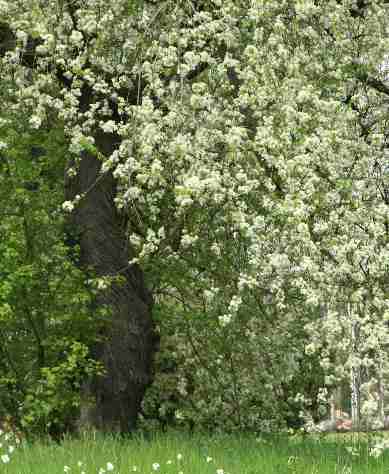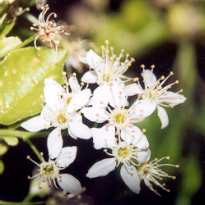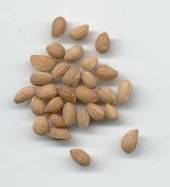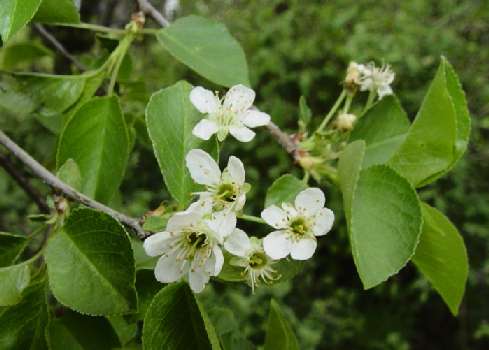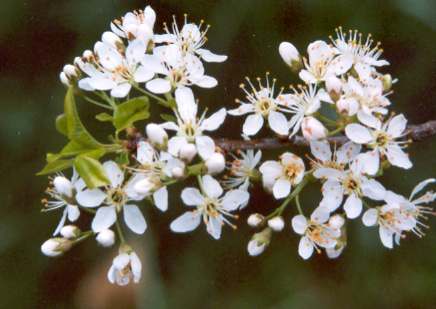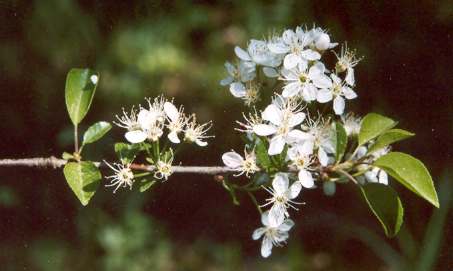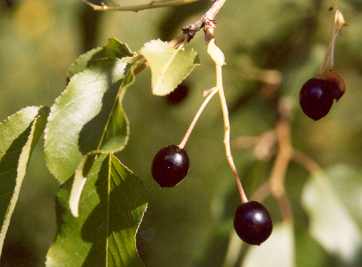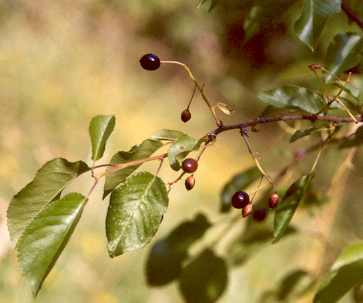| ||
|
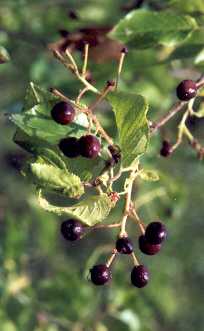
|
| Ripe mahalab cherries |
As far as I know, mahaleb cherry spice is known only in the Eastern Mediterranean and nearby Armenia; it is used almost exclusively for sweet breads and confectionery. Especially in Greece, the kernels are loved for specialties like tsoureki [τσουρέκι], a brioche-type braided sweet bread that is traditionally baked and eaten only at Easter time. Besides mahaleb kernels, it is flavoured with mastic, the resin from Pistacia lentiscus var. chia which is used only in Greek cuisine. In more recent years, vanilla-scented tsoureki has also become quite popular. Mahaleb is also used in Greece for yeast cakes or cookies (vasilopita [βασιλόπιτα]) and for a special type of Easter cheese pie or cheese cake on Cyprus (flaounes [φλαούνες]).
In West Asia, mahaleb kernels are best known in the cooking styles of Armenia and of the Levant. Armenian chorak (also written choreg or chorek [չորեկ]) is a sweet bread very similar to Greek tsoureki, although there is usually no mastic used for it. A variant of chorak is prepared as dry crackers. This product is enjoyed all over the year, particularly with a cup of strong coffee. An Arabic example is the crumbly shortbread pastry ma'amul [معمول] popular in Lebanon and Syria, which is usually stuffed with ground nuts or date paste.
In all these recipes, the mahaleb cherry kernels are used finely ground. Nevertheless, the spice should always be bought as whole kernels, because the powder spoils quickly due to its high lipid content. Even the whole kernels will, in my experience, go rancid after one or two years (unless kept in the freezer, perhaps).
Mahaleb cherry stones may be difficult to obtain in the West, being
available only in Eastern Mediterranean specialty shops and sometimes
from Greek, Turkish or Arabic vendors. As a reasonable substitute, I suggest
a mixture of tonka beans with a hint of
bitter almonds, which are, unfortunately,
also not easy to get.
